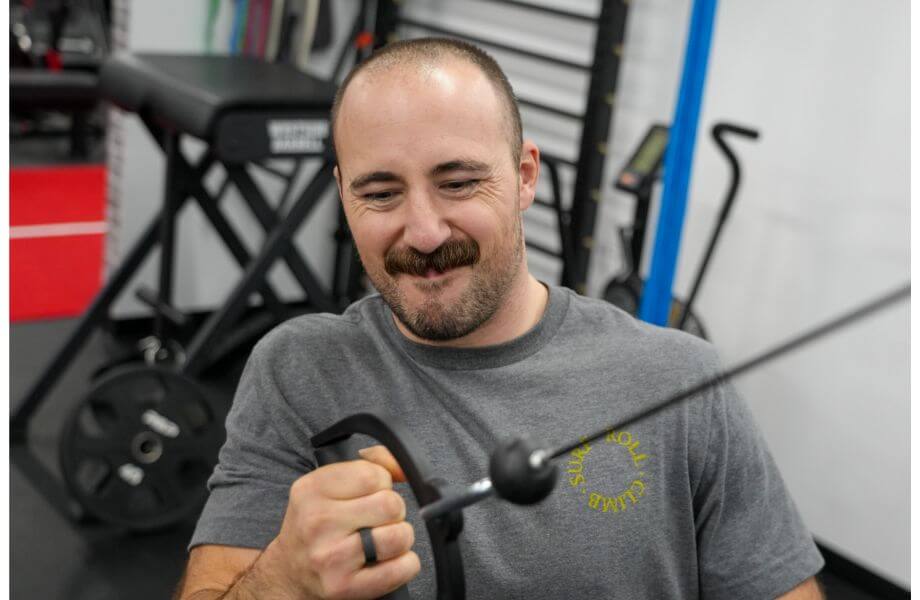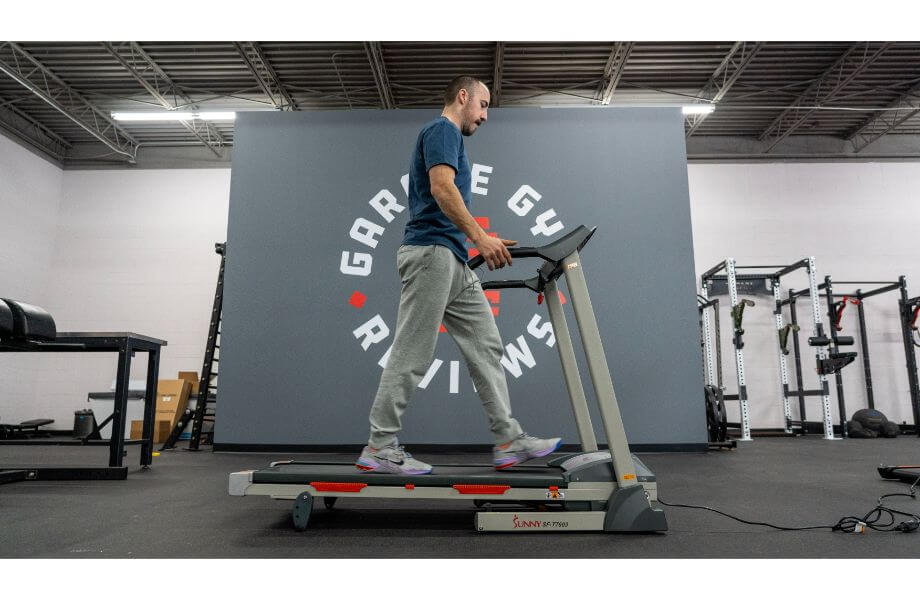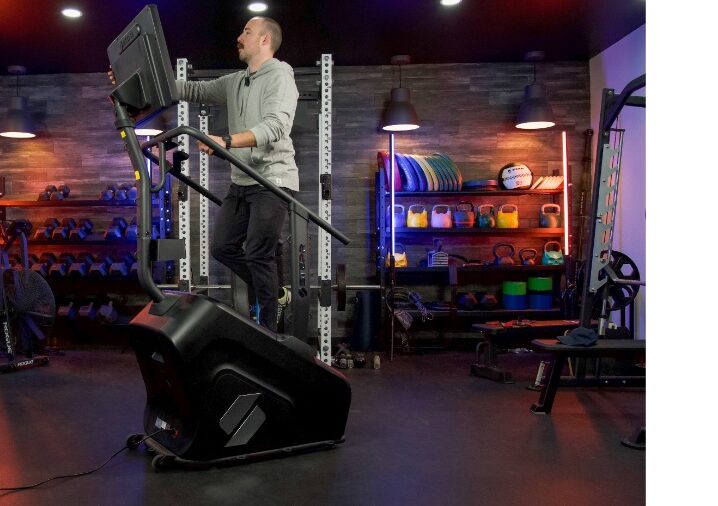You’ve likely heard a lot about how important resistance training is, but you may still be wondering “What is resistance training? And how do I know if I’m doing it?” In this guide, we’ll define resistance training and break down the different types, like strength training. We’ll also go over the benefits and give you some quick tips on how to start.
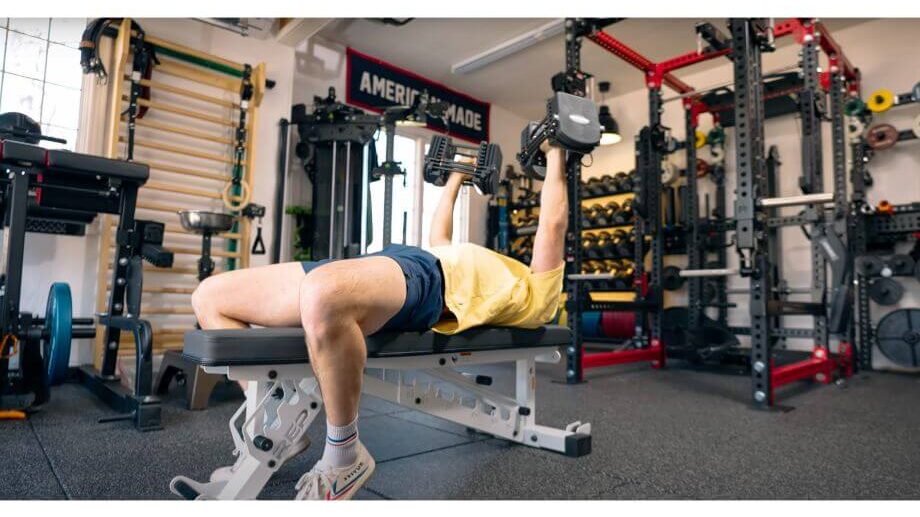
Defining Resistance Training
Resistance training is exercising your muscles against some type of opposing force—or resistance. This opposing force could be weights, like dumbbells or kettlebells, but it could also come from resistance bands or even your own body weight. For example, push-ups and squats are forms of resistance training that don’t require any extra equipment.
On a basic level, the goal of resistance training is to increase muscular strength and endurance. But many people mistakenly think it’s just about changing your body composition, which couldn’t be further from the truth. Resistance training is also important for balance, mood, and your heart, bones, and joints (among other things).
The terms resistance training, strength training, and weight training are often used interchangeably, but there are some differences between these forms of exercise.
Strength Training vs Weight Training vs Resistance Training
Resistance training is the broadest of the bunch. Strength training and weight training both fall under the “resistance training” umbrella. In other words, if you’re talking about either strength training or weight training, you can lump them together as forms of resistance training. But strength training and weight training have notable differences.
Weight training is a type of resistance training, but it involves using actual weights, like barbells, dumbbells, or the weight stacks you get with a home gym. There isn’t necessarily a specific goal associated with weight training—you may be lifting weights to change your body composition, get stronger, and/or increase power and endurance.
Strength training is a type of resistance training that’s specifically targeted toward increasing strength. It often relies on progressive overload, which involves gradually increasing the time, weight, reps and/or intensity of your workout as your muscles adapt to build strength over time. Weight training can be a type of strength training, but strength training doesn’t always involve actual weights.
No matter which type of resistance training you do, there’s some degree of muscle hypertrophy (or muscle growth) happening.
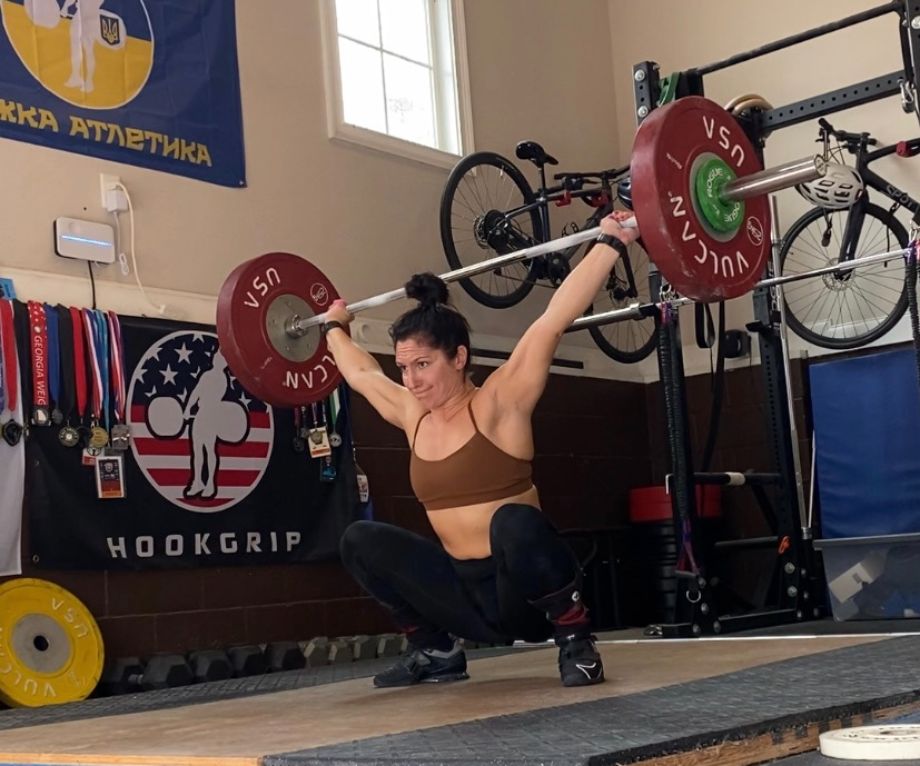
Types of Resistance Training
Now that we’ve broadly discussed the different types of resistance training, let’s get a little more into the nitty gritty. There are several types of tools you can use to create opposing force that allows you to effectively resistance train. These are free weights, exercise machines, resistance bands, and your own bodyweight.
Free Weights
Free weight training involves using weighted objects that aren’t attached to anything. You can pick them up and move them around as you see fit. Examples of free weights include dumbbells, kettlebells, barbells, medicine balls, and sandbags.
Machines
Machines are any type of device that utilizes weight stacks or cables to create resistance for you. Some exercise machines, like home gyms, allow you to get a full-body workout by accommodating different exercises to target all the major muscle groups. Others are more targeted to your upper body or lower body. For example, a leg press machine targets the quadriceps, glutes, and calves, while a chest press machine targets your pectorals, biceps, deltoids, and latissimus dorsi.
Resistance Bands
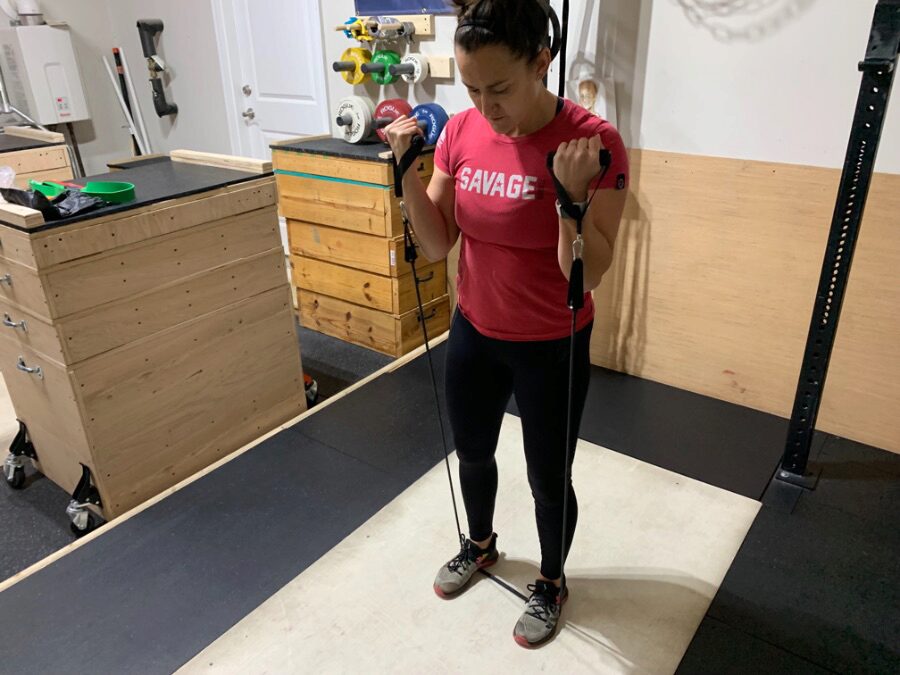
Resistance bands are elastic bands that exert a certain amount of force against your muscles when you stretch them. This puts tension on your muscles that has a similar effect to other types of resistance training. And while resistance bands may seem unassuming, they can be just as effective as free weights and machines in increasing strength, according to one study published in Sage Open Medicine1 in 2019.
Bodyweight Training
Just like it sounds, bodyweight training means you’re using your body as the weight, or opposing force, instead of an outside object like a dumbbell. And there are different types here, too. Let’s break them down.
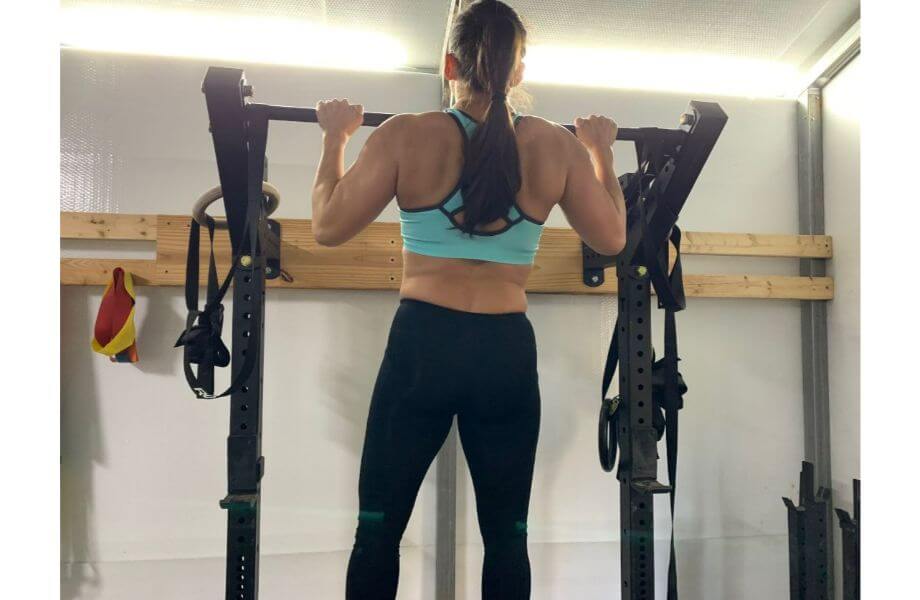
Calisthenics
Calisthenics is probably what most people think of when they hear the term bodyweight exercises. In short, calisthenics are basic resistance exercises that help you build strength, flexibility, balance, and coordination—no equipment required. The types of exercises that fall under this category include push-ups, pull-ups, lunges, squats, sit-ups, leg raises, and planks.
Plyometrics
Plyometrics is a type of resistance training that’s designed to help increase overall power, or your muscle strength and speed. The goal is to exert maximum force in a short amount of time. Usually there’s some type of jumping or quick power move involved. Examples of plyometric exercises include box jumps, jumping rope, jump squats, burpees, medicine ball throws, jumping jacks, mountain climbers, and skaters.
General Bodyweight Strength Training
There’s also more general bodyweight training. This type of resistance training doesn’t really fall into either of the above categories, but it still helps build muscular strength and comes with other health benefits, too. This can include workouts like yoga and gymnastics.
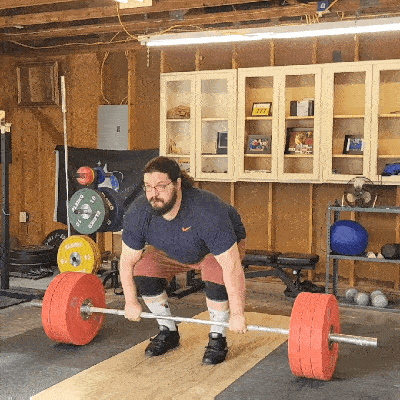
Why You Should Do Resistance Training
There are so many reasons you should add resistance training to your workout routine. Some think building muscle is the primary goal, but there are several benefits beyond that, too. We wrote an in-depth guide on the benefits of resistance training so you can reference that for more detail, but here’s the CliffsNotes version:
- It helps you build muscle. You naturally lose muscle mass2 as you age, and resistance training is an excellent way to combat that.
- It increases strength, maximal force3 and time-limited force expression.
- It can help with weight loss and body fat loss. While aerobic exercise burns more calories in the moment, resistance training can increase your resting metabolic rate4, which can help you burn more calories over time. For optimal results, it’s best to combine resistance training5 with regular cardio.
- It strengthens your bones and joints. Weight training can preserve bone and muscle mass6 and increase bone density, which reduces the risk of developing osteoporosis.
- It decreases your risk of falling7, which can simultaneously lower your risk of injury.
- It promotes flexibility and mobility8, and can help improve balance.
- It can improve heart health. While cardio exercises are typically the go-to for reducing risk of heart disease, resistance training can help too. One survey published in Medicine and Science in Sports and Exercise9 found that adding one to three strength training sessions per week could reduce your risk of cardiovascular events by 40-70%.
- It may make you happier. Physical activity in general helps improve your mood, but resistance training, in particular, may help combat anxiety and depressive symptoms, according to a study published in Aging & Mental Health10. Of course, it’s not a substitute for medical care, but it can be a worthwhile addition to your treatment plan.
- It can increase your quality of life11 and improve your overall well-being.
How to Start Resistance Training
The best way to start a resistance training routine is to just start. It doesn’t have to be complicated or even take up too much of your time. The current Physical Activity Guidelines recommend resistance training at least twice per week12 (in addition to getting at least 150 minutes of cardio in).
If you’re new to resistance training, this twice-a-week goal is a good starting point to help ease you in. Once you adapt, you’ll likely want to add a session a couple more times a week, making sure to hit all your major muscle groups.
And you don’t have to make a huge investment in equipment, either. If you don’t have any weight machines or free weights, you can get started right now by using bodyweight strength training as your jumping off point.
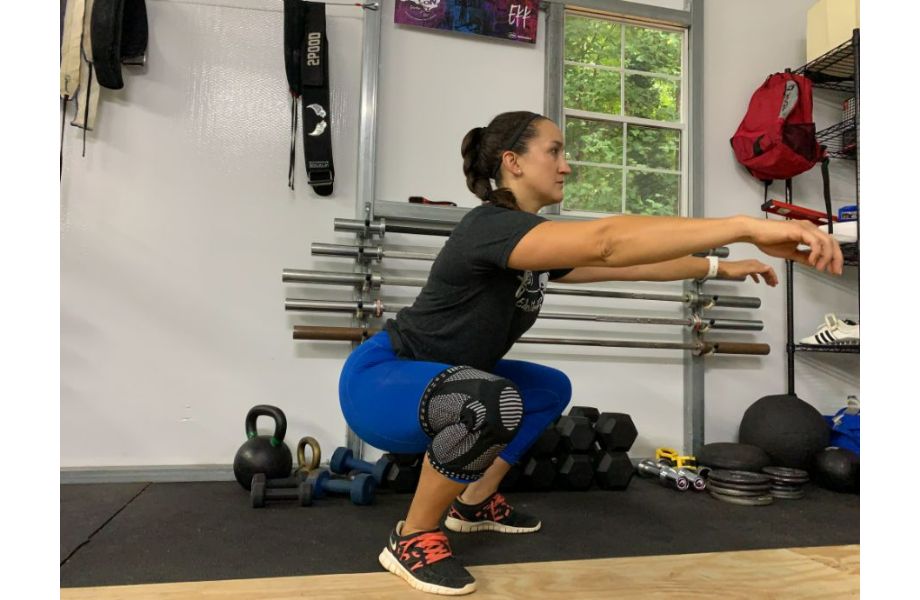
You can start by doing a really simple circuit that looks something like this:
- 25 squats
- 10 push-ups
- 20-second plank
- 10 walking lunges (left leg)
- 10 walking lunges (right leg)
- 10 tricep dips
- 40 jumping jacks
As you get comfortable, you can invest in a basic dumbbell set and add in bicep curls, lateral raises, and overhead presses.
If you want a more targeted resistance training program, it’s best to consult a certified personal trainer who can help put together a plan that’s appropriate for your fitness level and goals. It’s also a good idea to get cleared by a doctor before starting, especially if you have any underlying medical conditions.
Final Thoughts: What Is Resistance Training?
Resistance training is a form of exercise that involves using your muscles against some type of opposing force. There are different types of resistance training exercises, from body workouts to machine-based programs. But no matter which type of training you decide to do, there are a lot of potential benefits, like increased muscle size and muscular endurance, improved mood, and stronger bones. The takeaway here is that resistance training should be a regular part of your workout routine, regardless of your fitness level.
Q&A: What Is Resistance Training?
Is Walking A Resistance Training Exercise?
Walking is technically a weight-bearing exercise, but it’s not considered resistance training. While it does build muscular strength and endurance to some degree since you have to support your weight, it’s really a low-impact form of cardio. Walking is a good way to warm up before a resistance training session.
What Is The Best Resistance Training To Build Muscle?
If your goal is to build muscle, you’ll want to do weight training and strength training exercises. This combo can help increase muscle mass, while also making you stronger. As you adapt to your workouts, you’ll want to make sure you’re sticking with the principle of progressive overload; as your muscles get bigger, you’ll need to lift heavier weights and/or increase the number of repetitions (reps) to continue seeing results.
Is It Okay To Do Resistance Training Every Day?
It’s okay to do resistance training every day as long as you’re strategic about it by alternating muscle groups. You don’t want to work the same muscle groups day after day. That being said, rest days give your muscles a chance to repair damaged tissues and recover, and they’re an important part of the process too. A good goal is to incorporate resistance training three to five times a week.
References
- Lopes, JSS, Machado, AF, Micheletti, JK, de Almeida, AC, Cavina, AP, Pastre, CM. Effects of training with elastic resistance versus conventional resistance on muscular strength: A systematic review and meta-analysis. SAGE Open Med. 2019;7. doi:10.1177/2050312119831116
- Westcott, WL. Resistance training is medicine: effects of strength training on health. Curr Sports Med Rep. 2012;11(4):209-216. doi:10.1249/JSR.0b013e31825dabb8
- Suchomel, TJ, Nimphius, S, Bellon, CR, Stone, MH. The importance of muscular strength: training considerations. Sports Med. 2018;48(4):765-785. doi:10.1007/s40279-018-0862-z
- Aristizabal, JC, Freidenreich, DJ, Volk, BM, et al. Effect of resistance training on resting metabolic rate and its estimation by a dual-energy X-ray absorptiometry metabolic map. Eur J Clin Nutr. 2015;69(7):831-836. doi:10.1038/ejcn.2014.216
- Ho, SS, Dhaliwal, SS, Hills, AP, Pal, S. The effect of 12 weeks of aerobic, resistance or combination exercise training on cardiovascular risk factors in the overweight and obese in a randomized trial. BMC Public Health. 2012;12:704. Published 2012 Aug 28. doi:10.1186/1471-2458-12-704
- Hong, AR, Kim, SW. Effects of resistance exercise on bone health. Endocrinol Metab (Seoul). 2018;33(4):435-444. doi:10.3803/EnM.2018.33.4.435
- Clemson, L, Fiatarone, Singh, MA, Bundy, A, et al. Integration of balance and strength training into daily life activity to reduce rate of falls in older people (the LiFE study): randomised parallel trial. BMJ. 2012;345:e4547. Published 2012 Aug 7. doi:10.1136/bmj.e4547
- Morton, SK, Whitehead, JR, Brinkert, RH, Caine, DJ. Resistance training vs. static stretching: effects on flexibility and strength. J Strength Cond Res. 2011;25(12):3391-3398. doi:10.1519/JSC.0b013e31821624aa
- Liu, Y, Lee, DC, Li, Y, et al. Associations of resistance exercise with cardiovascular disease morbidity and mortality. Med Sci Sports Exerc. 2019;51(3):499-508. doi:10.1249/MSS.0000000000001822
- Cunha, PM, Werneck, AO, Nunes, JP, et al. Resistance training reduces depressive and anxiety symptoms in older women: a pilot study. Aging Ment Health. 2022;26(6):1136-1142. doi:10.1080/13607863.2021.1922603
- Borges-Silva, F, Martínez-Pascual, M, Colomer-Poveda, D, Márquez, G, Romero-Arenas, S. Does heavy-resistance training improve mobility and perception of quality of life in older women?. Biology (Basel). 2022;11(5):626. doi:10.3390/biology11050626
- Patel, AV, Hodge, JM, Rees-Punia, E, Teras, LR, Campbell, PT, Gapstur, SM. Relationship between muscle-strengthening activity and cause-specific mortality in a large US cohort. Prev Chronic Dis. 2020;17:190408. doi: http://dx.doi.org/10.5888/pcd17.190408


